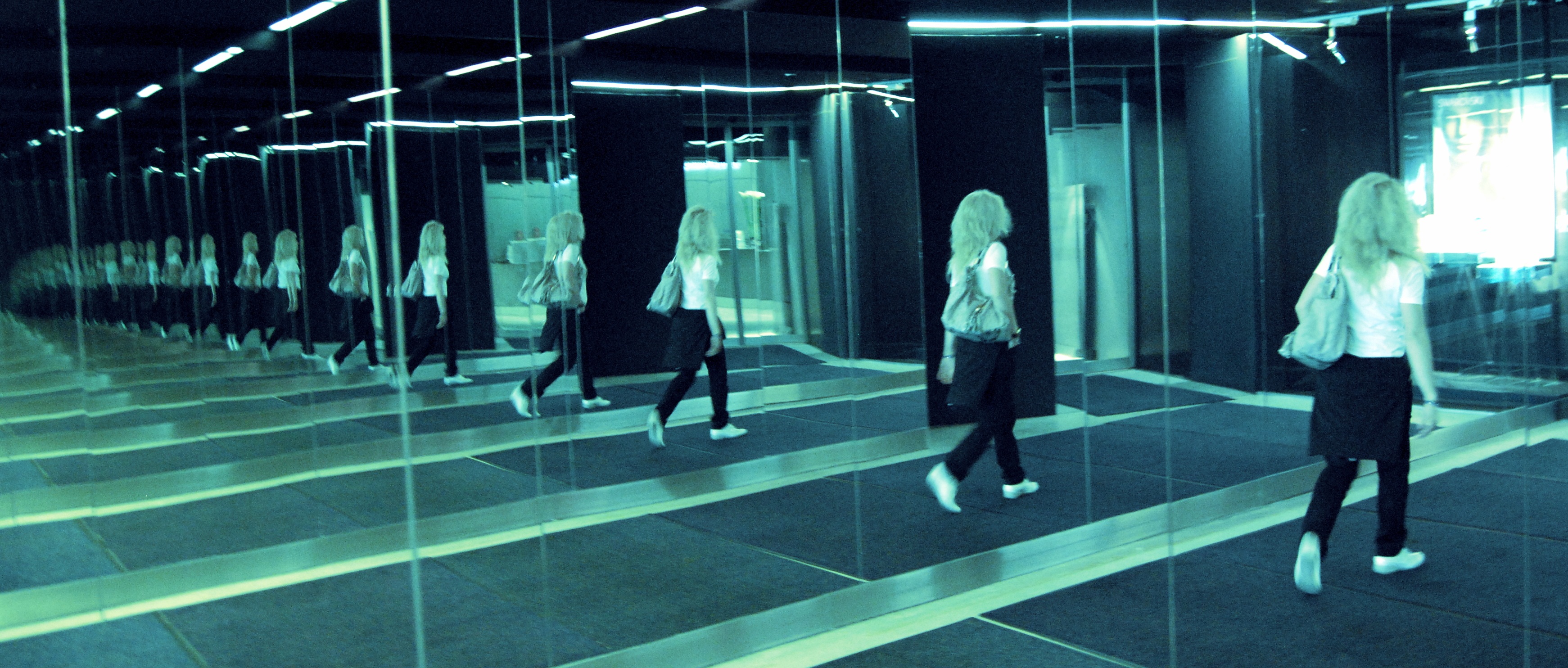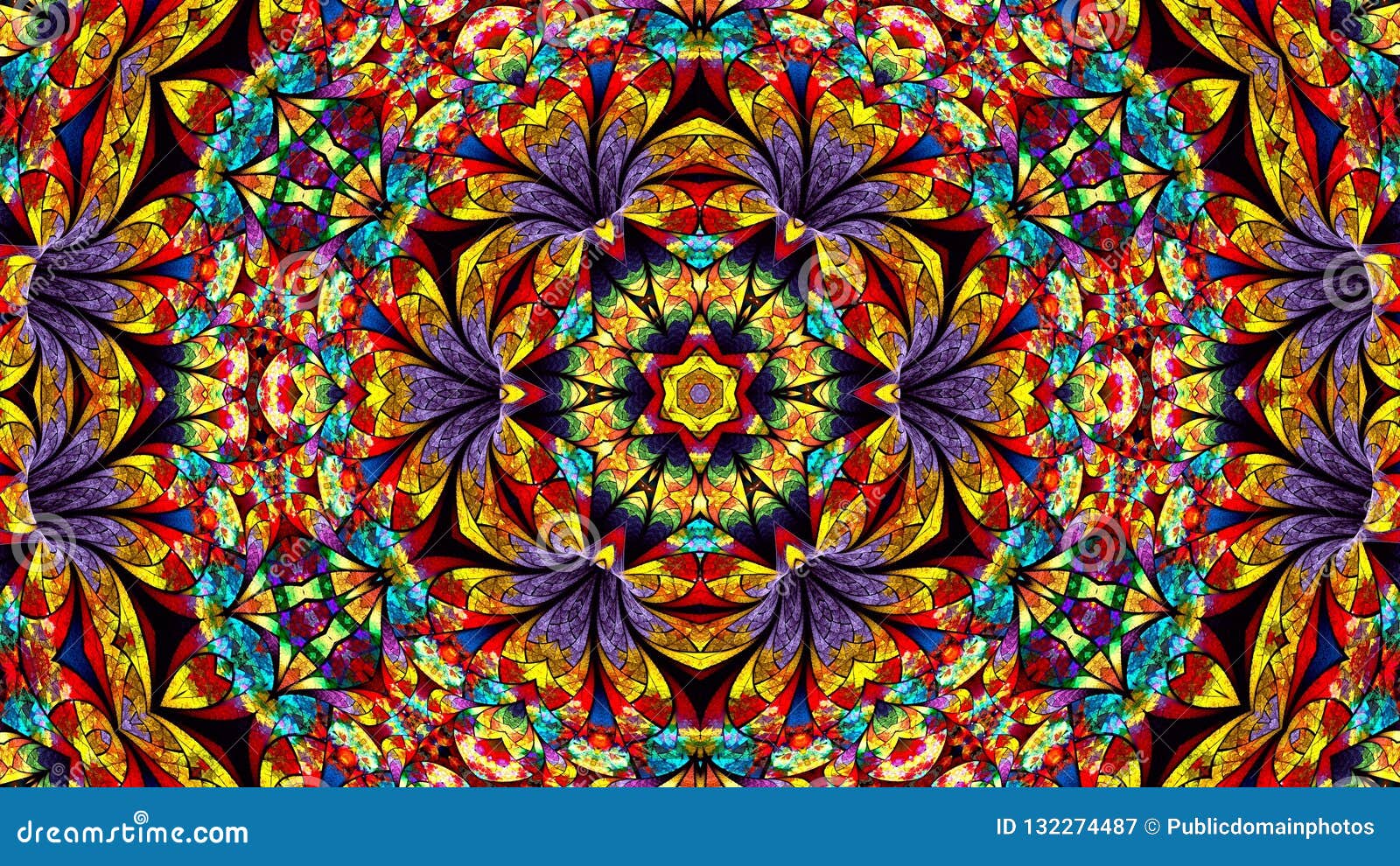 |
| Infinity woman. Permission: used under a CC0 license. |
There’s a concept that applies to all arts and crafts:
- 1x is a mistake
- 2x is weird
- 3x (or more!) is a pattern.
 |
| Kaleidoscope. Permission: Public domain |
Take a look at this one:
 |
| The Crucifixion by Rogier van der Weyden, 1445. Permission: Public domain |
Look at the work as a whole, and evaluate the story being depicted. Now, one at a time, look at each panel alone (hold your hands up over the screen and block the panels you don’t want to see).
Notice how you only get part of the story? Now look at the work as a whole again. See how there are repeated motifs - each panel has at least one dark angel at the top, and has the same shade of red somewhere in it, and the right two panels have blue in the clothing, but the left panel doesn’t - it’s primarily dark and the heaviness helps to balance the much greater red content on the right.
Quilts (hey, at least we are talking about a fiber art now!) are another excellent example of theme repetition. Many traditional designs repeat a motif over and over, each one slightly varied. Go to Google and search for “Sunbonnet Sue Quilt.” Click on images and scroll down. Do you see how the repetition with slight difference can be really pleasing to the eye?
Modern quilts (and some traditional ones) may have little, or no repetition in the pieced top - instead, the quilting stitch pattern that holds the layers of the quilt together is repetitive. And often BOTH are. Even the type of quilt called a “crazy quilt” typically repeats motifs in some manner, as shown here.
 |
| Small Sized Silk Crazy Quilt made by Mrs. Brown circa 1890. Permission: Missouri Historical Society Open Access Policy |
What does this have to do with yarn crafts? I’m glad you asked. :-)
Often, you’ll see discussion among knitters who have made a mistake in their knitting, and someone usually offers up “repeat it and it becomes a design feature.” And while they are totally right, it’s extraordinarily difficult to deliberately repeat an actual mistake and have it turn out well (and not just look like multiple mistakes). Possible, yes. Easy, no. But it’s not really about correcting mistakes, it’s about experiencing the repetition of a motif from the moment you start knitting with variegated yarns.
- Variegated yarns are themselves a repetition of a motif.
- Variegated yarns are in and of themselves a repetition of a motif.
- Variegated yarns repeat a color motif.
The colors repeat rhythmically, in a predictable fashion. That property is at the HEART of these yarns.
What makes working with variegated yarns difficult - and yes incredibly exciting and surprising - is that knit and crochet and weaving is ALSO rhythmic and repetitive. And it is the intersection between the rhythmic activity and the rhythmic colors where the magic happens.
So, is it any surprise, that much of the advice to achieve the various effects also involves different forms of repetition?
- Do you want to break up pooling and mix the colors more? Alternate skeins every other row or every round or two; or if you’ve only got one skein, knit from both ends.
- Do you want to flash the colors? Easy - repeat the magic number.
- Do you want to concentrate the colors? Repeat a short rows sequence every time you encounter a certain color
- Do you want to pair with a solid? Stripes, Brioche and slip stitches to the rescue.
Not all of the techniques involve repetition, but most do.
Back to TOC, or go to Part 3.
No comments:
Post a Comment
Neither spam nor mean comments are allowed. I'm the sole judge of what constitutes either one, and any comment that I consider mean or spammy will be deleted without warning or response.